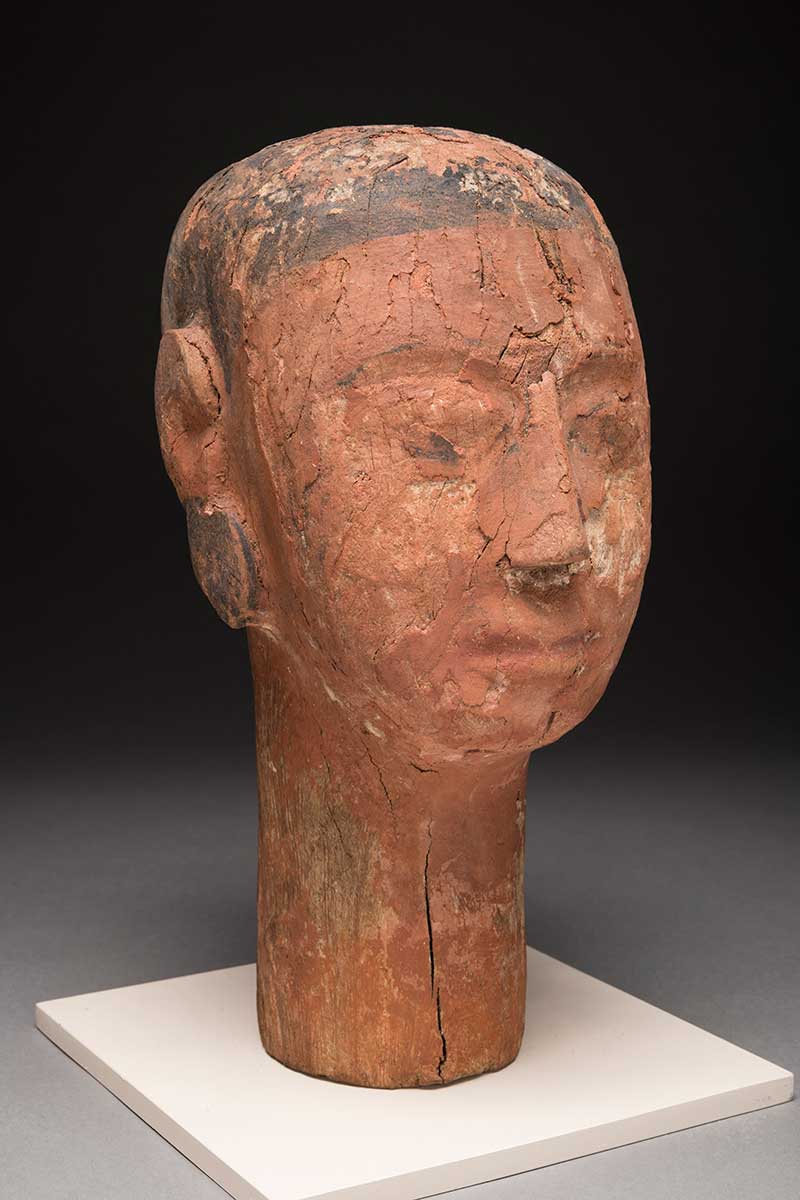Providing for the Afterlife: Ancient Egyptian works from Eton College
Head, Possibly a Wig Stand
By Ashley Fiutko Arico, Linda Horn, Melanie Capruso and Sanchita Balachandran

Description
This head, with its subtly modeled facial features, sits atop an elongated neck. A hole drilled into its bottom facilitates its display. The head is covered in a thick layer of plaster, which in turn has been painted a shade of red usually used for the representation of male skin tones in ancient Egyptian art. Details have been added in black to indicate the naturalistic line of the eyebrows, the outline of the eyes, and the pupils. Black pigment also covers the top and back of the head, following the natural hairline of the person depicted. The head’s only adornments are two large, circular earrings (painted black as well) that cover the earlobes. Examples of heads such as this one are exceedingly rare, and their ancient function remains elusive. One leading theory is that they were used as wig stands. Wigs, usually composed of human hair, were common wardrobe elements for both men and women in ancient Egypt.
Technical Research
X-rays of this object show that it is carved from a single piece of wood, with a hole drilled into the underside extending approximately half the height of the neck. The wood was relatively roughly carved and then thickly plastered prior to painting. Using both multi-band imaging and x-ray fluorescence (XRF) analysis, undergraduate students Melanie Capruso and Linda Horn identified the use of primarily iron-based pigments for the reddish tone of the face. The red appears to have been applied to the overall object before the addition of other colors. Infrared reflectography shows the extent to which carbon black was applied to delineate the hair, but also the arching eyebrows, large outlined eyes and pupils, and earrings. Another feature that is visible under the stereomicroscope but cannot be documented using XRF is the presence of what may be an organic orange-red paint that was applied over the existing red layer of the lips in order to produce a brighter tone.
